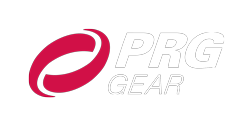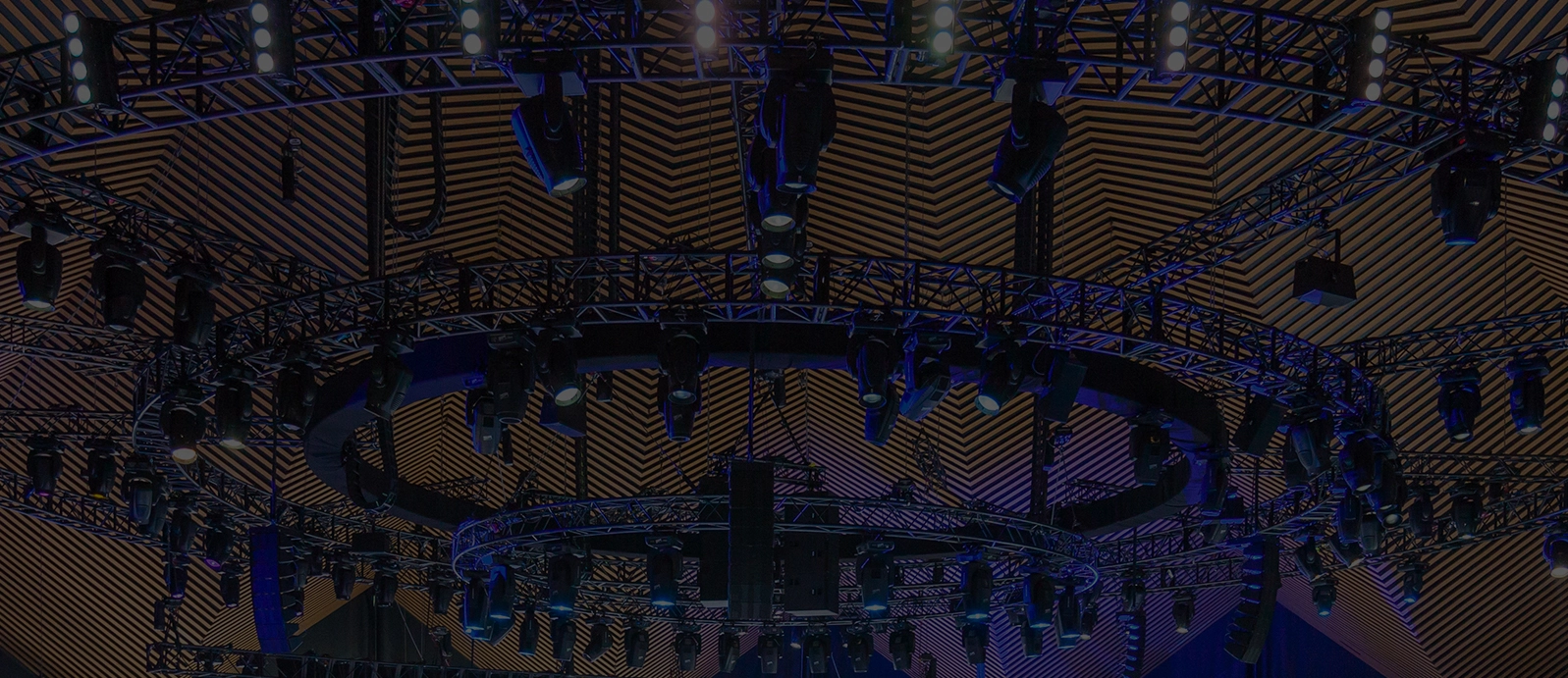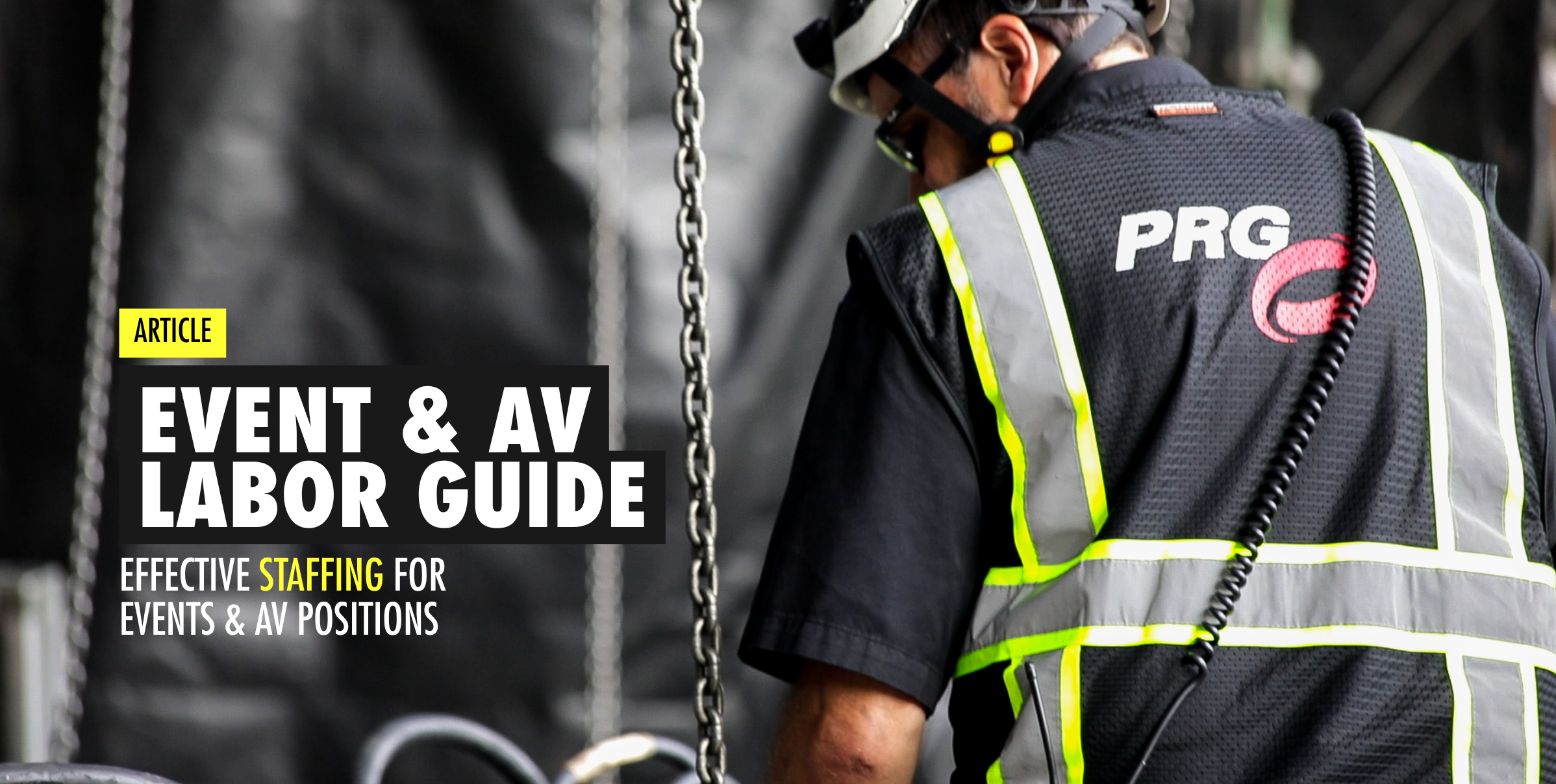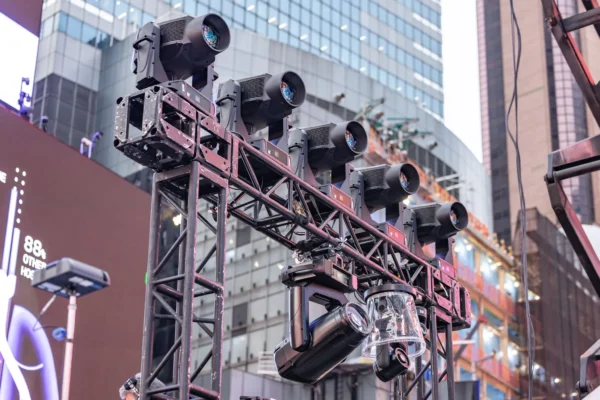Scalable Audio Solutions: What You Need for an Event with 100, 1,000 or 5,000+ Attendees
Planning an event means making hundreds of decisions; and sound often gets overlooked until it’s too late. But choosing the right audio setup is critical. Whether you’re hosting a 100-person seminar or a 5,000-person festival, the right system ensures every word is clear and every beat hits.
As any seasoned event planner knows, there is no one-size-fits-all solution when it comes to sound. Each system needs to be custom tailored – not templated. Every audience size introduces unique requirements, and misjudging those requirements can result in an audio setup that is either underpowered or unnecessarily excessive.

So what does it take to scale your audio the smart way? We’ll break it down for you, starting with the core components of an audio package.
Core Components in Every Audio Package
If you’re hosting a small gathering or a quick meeting in a breakout room, a Bluetooth speaker might do the job. However, once you’re presenting to a larger audience or incorporating multiple audio sources, such as microphones and media playback, a professional sound system becomes essential.
At its core, every scalable audio package includes:
-
- Inputs like microphones or DI boxes (for instruments or computers)
- A mixing console to control levels and routing
- Speakers to project the sound
- Processing and amplification, either built into the speakers or provided by external equipment
Think of it in three parts: capture the sound, shape the sound, and deliver it to the room. That structure holds true whether you’re hosting 10 or 10,000.
Small-Scale Setup: What You Need for 100 People
For audiences up to 100, such as a corporate presentation or intimate wedding, a simple speaker-on-stick setup is usually enough. A pair of powered speakers, a small mixer and one or two wireless microphones can go a long way. Electro-Voice ETX-12P or JBL PRX712 are reliable options in this category.
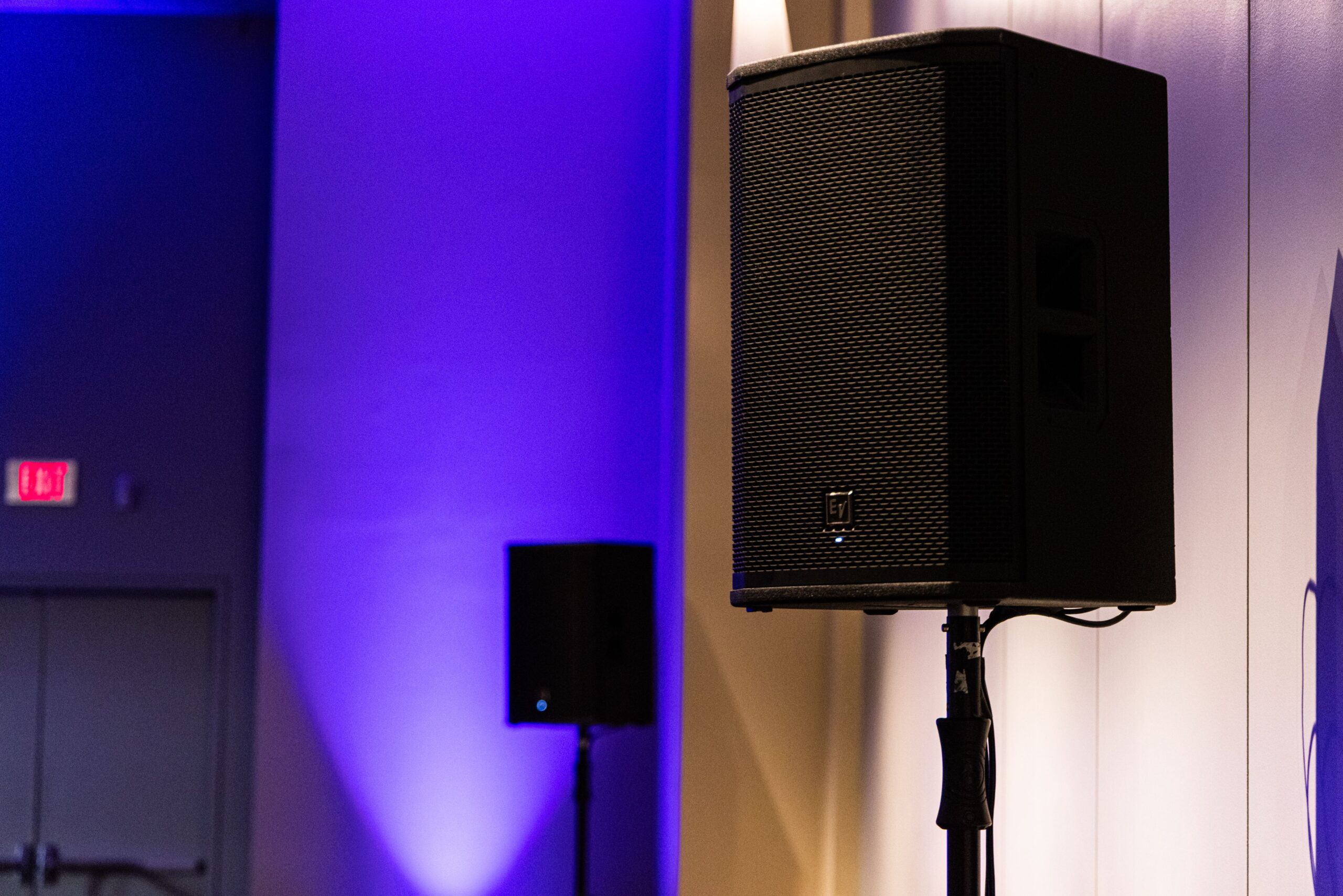
Add subwoofers if you need punchy music playback. For example, a DJ set or walk-up music to energize a crowd might call for it. If your audio needs are minimal, investing in premium speakers such as the L-Acoustics X8 or Meyer UPJs can still be worth it, especially when clarity and ease of deployment matter.
Mid-Size Setup: Audio for 1,000 Attendees
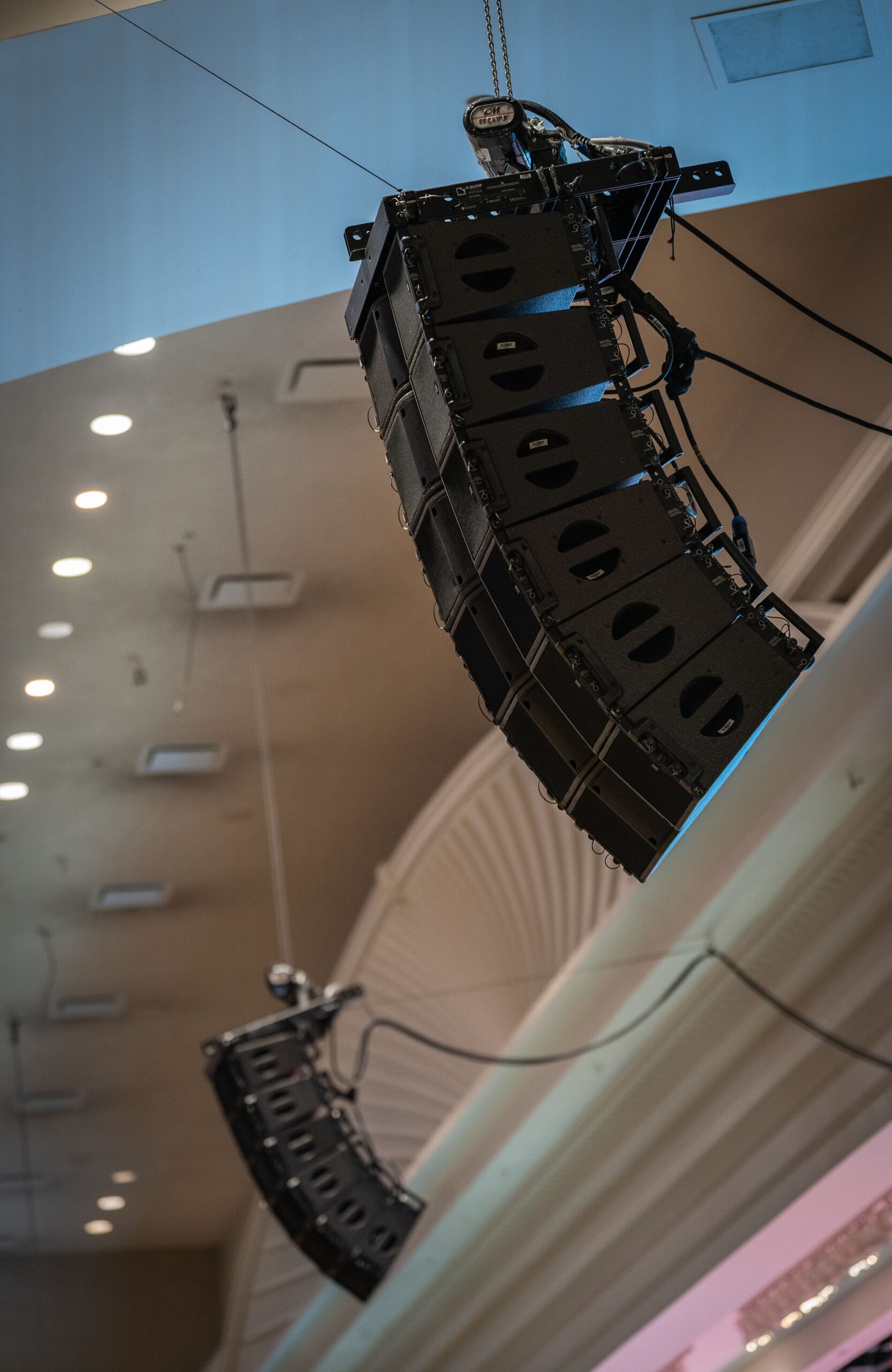
Once you’re in the 1,000-person range, things get more technical. You’ll likely need:
-
- Larger speakers or line arrays
- Rigging or stands to elevate speakers above the crowd
- System processors to handle delay alignment and distribution
At this level, coverage becomes critical. If your audience stretches deep into a ballroom or across a wide space, you may need to add more speakers across the width or place delay speakers mid-room. These must be time-aligned properly, which introduces the need for advanced processing.
Systems like the JBL VRX932 or L-Acoustics Kiva II can be flown or stand-mounted depending on the venue. That flexibility makes them great options in this range.
Large-Scale Events: Audio Solutions for 5,000+
At this size, you are typically in an arena, outdoor festival or large-scale general session. Every element of the audio system scales up:
-
- Large-format line arrays such as L-Acoustics K1 or Meyer LEO
- Delay towers or distributed speaker zones
- Multi-console setups for front-of-house and monitor mixes
- Extensive cabling, power distribution, and processing
More inputs mean more microphones and more complexity. You might also need front fills, out fills and backstage monitoring. With more gear comes the need for more crew, including certified system engineers to manage design, tuning and deployment.
In some cases, especially for outdoor shows or touring acts, the main arrays are flown while delay towers are skipped due to time or space constraints. This makes system design and placement decisions even more important.
Common Mistakes and How to Avoid Them

One of the biggest pitfalls is underestimating the power needed. It’s not uncommon for event planners to assume that a couple of speakers will handle a 500-person room, often based on what they have seen on television.
But in reality, audio requirements scale with space, not just the number of people. A wide or deep room, high ceilings or outdoor wind can all impact how sound behaves.
Another common issue is skipping the system design phase. You can use manufacturer-specific tools to model coverage and determine the best deployment plan. This ultimately saves time on-site and ensures your sound system will work as intended. That includes decisions around flying arrays, spacing speakers and dialing in processing.
Get Expert Help with Scalable Audio Solutions
The good news is that you don’t have to figure it all out on your own.
Working with a partner like PRG Gear gives you access to a deep inventory of audio equipment along with experienced engineers who know how to scale systems effectively. Our sales team works closely with expert Technical Product Managers to ensure every audio solution is designed to fit the space, audience and type of content.
From small gatherings to massive productions, the right audio setup starts with asking the right questions and having the right team and equipment in place.
